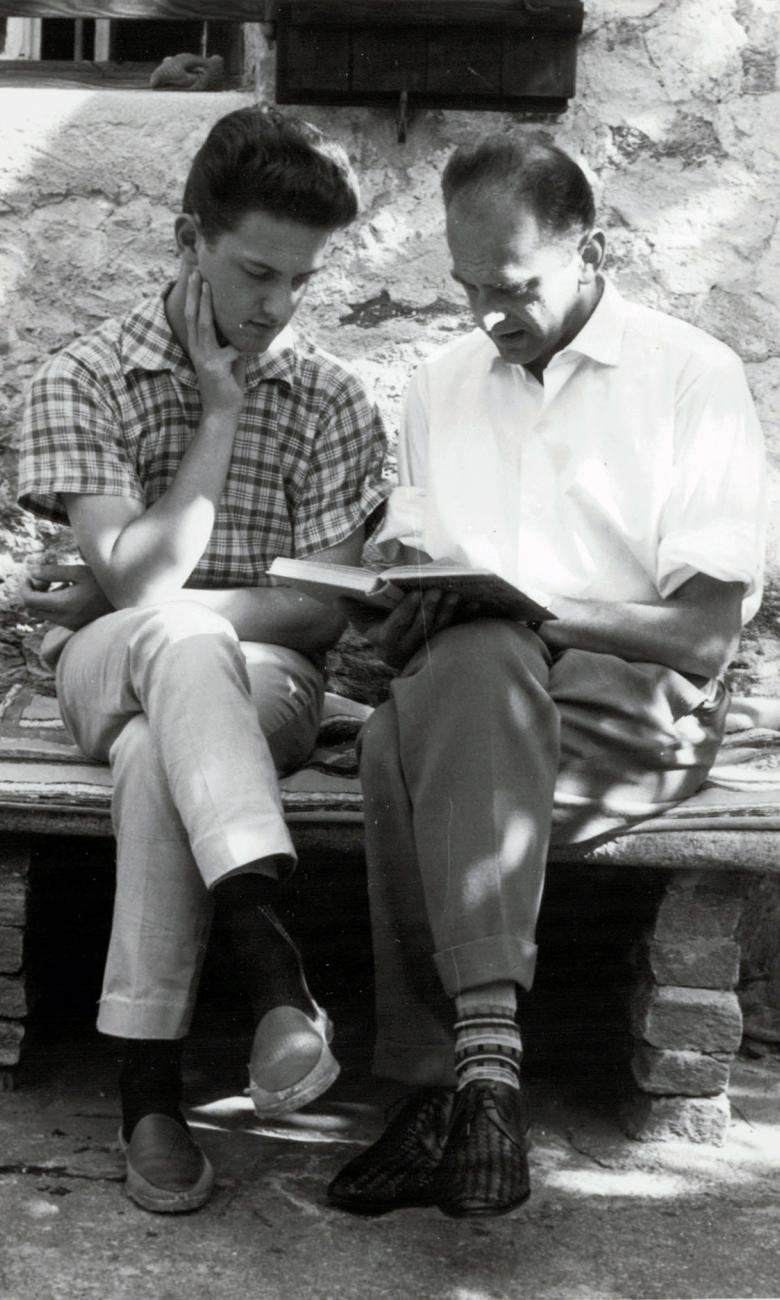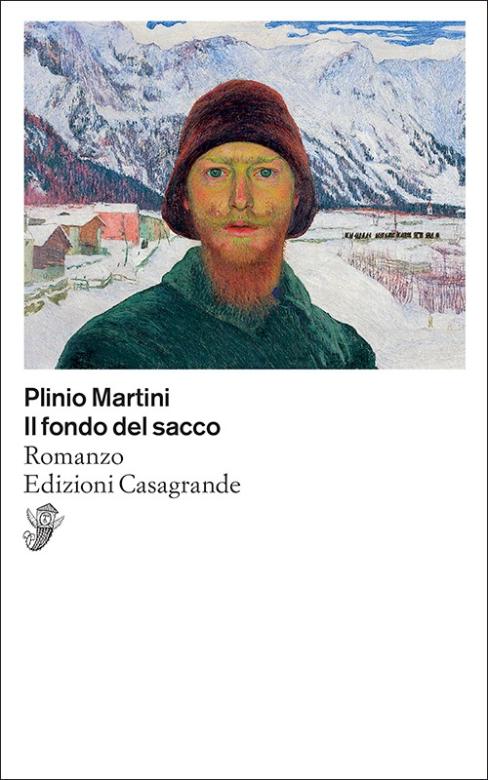Gori: from Ticino to the United States
For this year's Italian Language Week, we follow the footsteps of Gori – the protagonist of Rock Bottom, a novel by Plinio Martini of the canton of Ticino – who left home in search of new happiness in the United States. His story is reminiscent of that of many Swiss Italians past and present, who set out to fulfil their dreams in other countries: we encounter them by exploring the OltreconfiniTi portal.
Did you know that the Swiss & Italian Festa has been held in Victoria since 1993, in memory of the Swiss-Italian roots of many Australians? Or that in Argentina, in the province of Córdoba, there is a city called Ticino, co-founded in 1911 by a Ticinese citizen from Mendrisio? Events, place names or even traditions born of travellers who left Ticino and went overseas. Their stories inspired another journey – this one literary.
It is the story of Gori, the protagonist of Plinio Martini's novel Rock Bottom, set in the first half of the 20th century. A native of Valmaggia, he left Val Bavona in Ticino to seek his fortune in the United States. He later returned to Switzerland. It is a story of emigration and regret common to many other Swiss men and women of that period who were forced to leave their country in pursuit of the American dream, or more simply, the dream of a new life abroad, with all the hardships that entailed.

The book describes the harsh everyday life in Val Bavona, punctuated by the rhythms of an agricultural existence, barely able to produce enough to survive and subject to the whims of nature, when the only prospect of a better life was to emigrate overseas. Gori thus leaves behind his work in the mountains, his family and his beloved Maddalena, and sets off for a country that represents an ideal for him. Since its first publication in 1970, the novel has had a great deal of success, and Martini remains to this day one of the best-known Swiss authors of the 20th century, not only in Italian-speaking Switzerland. This is evidenced by the success of translations of his work into various languages, including German, French, Finnish, Catalan, Albanian, Serbian and, in 2023, to mark the centenary of the author's birth, English.

Perhaps it is the very reason for the journey, and Gori's personal account of it, that brings together so many readers, united by the desire or need to leave home and discover new worlds. But how has Swiss-Italian emigration changed over the centuries? Who – like Gori – left to pursue an ideal? On the official website of the canton of Ticino you can find the OltreconfiniTi platform – a source for all things related to the Ticino diaspora. Let us explore it and follow the invitation to strike out beyond the confines of our imagination.
Stories of emigration from Italian-speaking Switzerland
Argentina, California, Chile and Russia are just some of the destinations reached by Swiss-Italians since the 19th century, such as the Ceppi and Botta-Galli families. Even today, in Nueva Helvecia in Uruguay, a town founded in 1862 that soon became the central hub for all Swiss residents in the country, it is possible to shop in the Supermercado Helvético.

These are some of the interesting things that can be found on the OltreconfiniTi portal, which takes a step-by-step look at the history of Ticino's emigration, from its origins to the present day. A veritable search engine for those who want to find out more about their roots. "The platform was born in 2013," says Mattia Bertoldi, coordinator of OltreconfiniTi, "and over the years it has been updated with content that offers a broad perspective on the diaspora. It ranges from more than 600 biographical profiles of Ticinese emigrants of the past to files on buildings constructed by returning emigrants with the money they earned abroad. But there are also in-depth studies on the works and people who have promoted Ticino's image internationally, such as the films shot on location there (you might recall James Bond's jump from the Verzasca dam in GoldenEye) and the celebrities who have chosen Ticino as their second home – for example Hermann Hesse, author of Siddhartha."
And as we click on the first pages of the site, we take a step back in time. Looking back at the great architecture of the 16th to 18th centuries, we recognise the work of many Ticinese citizens in the construction of palaces, churches and fortresses throughout Europe. Francesco Borromini, for example – one of the main exponents of Baroque architecture. Or the Magistri Moesani of Graubünden – great builders active in Bavaria, Poland and Austria.

We click again and are transported to the 19th century, where we enter the era of the great exodus, when emigrants from Ticino looked to more distant horizons to seek their fortune. A veritable gold rush to California and Australia saw many people from Locarno and Valmaggia in particular forsake the lands of their birth. When this phase was over, some decided to return home, taking their earnings with them, while others stayed behind and returned to working the land, raising livestock, winegrowing, etc.
In the 20th century, the transport sector transformed and with it the type of emigration also changed. Many made a new home for themselves in their country of destination, having gone there initially to work or study. In the decades following the Second World War, migration flows to South America, the United States and Australia decreased. As the years go by, it becomes increasingly difficult to keep track of the movements and destinations of Swiss-Italians and, more generally, of Swiss people around the world. A common thread, which we also find in young Gori's story, is precisely that need to leave for new destinations, and at the same time the need to maintain contact with the homeland. In today's world, technology can make things easier.
Staying in touch with Switzerland: from television to apps
An interesting episode redolent of home and nostalgia is reported on the OltreconfiniTi portal. In the 1960s and 1970s, the then TSI (Televisione Svizzera Italiana, today RSI) broadcast no fewer than eleven editions of the programme 'Riuniti per Natale' (Reunited for Christmas), which talked about the lives of Ticino emigrants. They can be viewed again in the archive portals. It was a popular format that showed images from all over the world and allowed people to maintain a connection with loved ones, near and far, scattered across the continents.
Today, with ever more frequent departures and faster travel, how is it possible to maintain contact with Switzerland? One way is to download SwissInTouch, an app that allows you to have 'Switzerland in your pocket'. The idea behind this initiative is to enable Swiss nationals abroad to receive and find – on one single, state-of-the-art platform – important information from their nearest Swiss representation, the central services of the Federal Department of Foreign Affairs and other institutional partners. The platform also shares news related to Italian language and culture in Switzerland, such as the translation of the famous book Rock Bottom into English (available as an ebook), bringing it to the four corners of the globe.

The Statistics on the Swiss Abroad of the Federal Statistical Office revealed that more than 800,000 citizens were registered in Swiss representations abroad in 2022. This community has grown in recent years and, in terms of numbers, it could be compared to the fourth most populous canton in Switzerland. What is changing, however, is not only the number of Swiss abroad, but also the type of emigration: more and more Swiss nationals are spending some time in a foreign country and then returning to Switzerland or moving to a third country. The bond with Switzerland and one's home canton remains strong, as does Gori's bond with his beloved Ticino valley.
Cover Image: © KEYSTONE/TI-PRESS/Francesca Agosta
Italian Language Week
The 'Settimana della lingua italiana nel mondo' (Italian Language Week) promoted by the Italian Ministry of Foreign Affairs, is held every year in October. Switzerland, with its representations abroad, also takes part in the initiative, placing one of its national languages – Italian, an essential part of the country's identity – at the heart of it.
Find out more: FDFA YouTube channel




